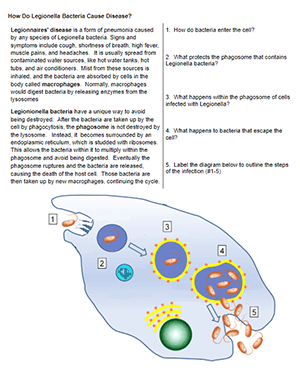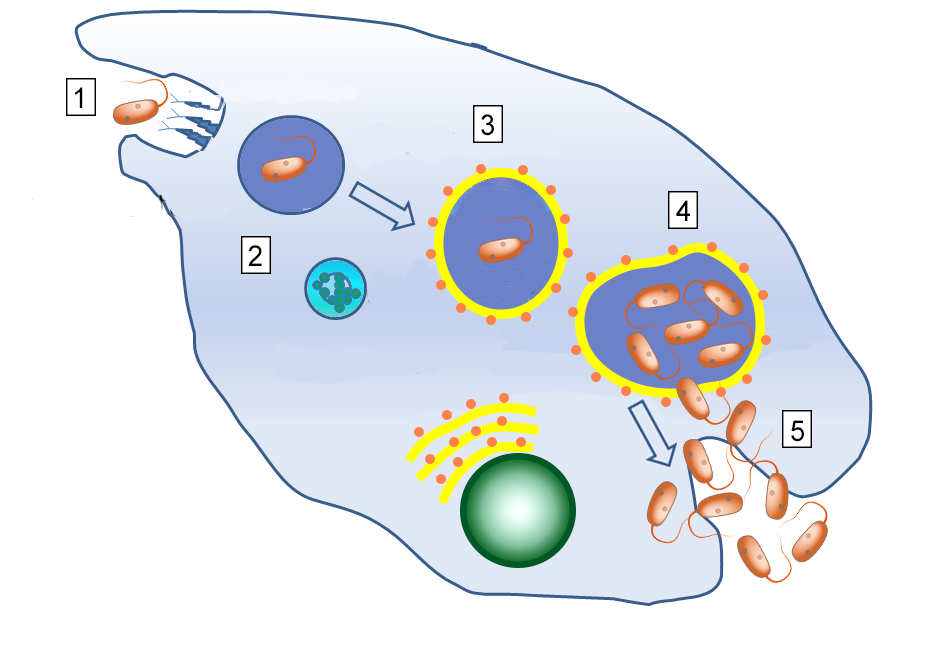
When I teach the cell membrane, I also go into the different types of passive and active transport. Passive transport is easy! Diffusion and osmosis can even be directly observed, so students can benefit from doing labs. For example, students can determine the molarity of a carrot by soaking them in different solutions. They can even directly observe what happens when a plant cell is soaked in salt water.
Active transport requires a little more creativity to engage students. In the past, I have focused on how macrophages of the immune system consume and digest pathogens. We also talk about cystic fibrosis and how transport proteins are necessary for the movement of chloride ions.
I was intrigued when I listened to a podcast (TPWKY) on Legionnaire’s disease. I had no idea that these bacteria actually reproduced within the cell. In fact, there are several like it, chlamydia and rickettsia bacteria also reproduce within the cell. Because I also teach anatomy, I tend to tie lessons on the cell to disease and homeostasis. Students definitely are more interested to learn about complex scientific processes when they can apply it to real-world problems.
I created this little worksheet to show students how phagocytosis by macrophages can lead to disease. A short passage explains Legionnaire’s disease and its symptoms. Then students examine a graphic that shows the steps in legionella bacteria infection.


